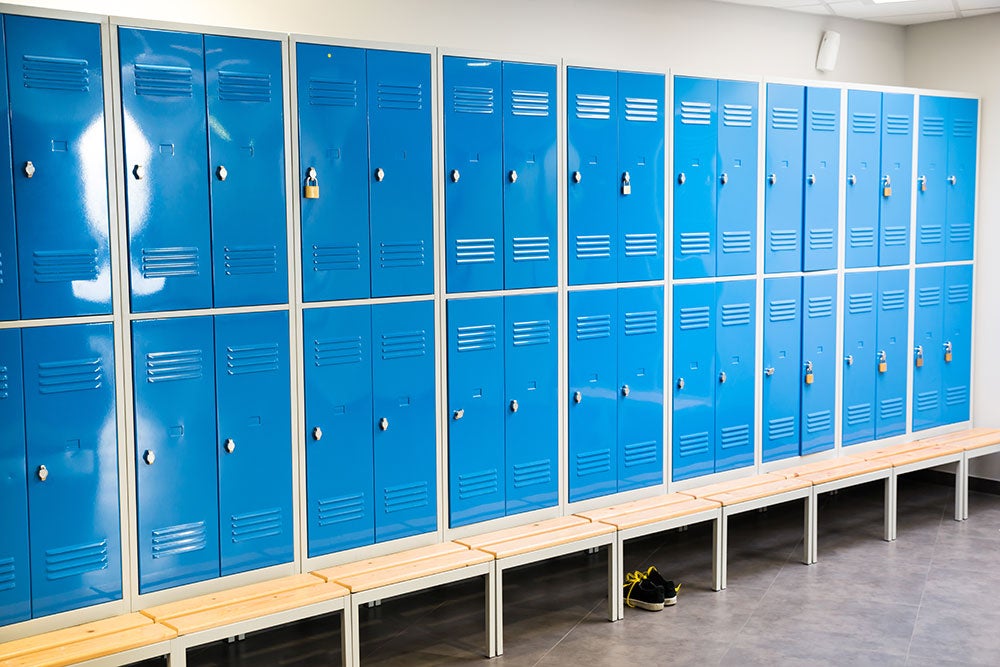Infection prevention isn’t just important in healthcare settings — it is also crucial in gyms and athletic facilities.
An organism that creeps up on athletic trainers and is often top of mind is methicillin-resistant Staphylococcus aureus or commonly referred as MRSA. MRSA is a bacterium that causes staph infections that can be found on the skin of athletes and is difficult to treat because, as the name alludes, the bacteria is resistant to some antibiotics.

MRSA is a particular cause of concern in athletic facility settings, where skin-to-skin contact and shared equipment or supplies may increase the risk of infections.1 According to the U.S. Centers for Disease Control and Prevention (CDC), athletic facilities, such as locker rooms, should always be kept clean and disinfected whether or not MRSA infections have occurred among athletes, and shared equipment that comes into direct skin contact should be cleaned after each use and allowed to dry.2
A big responsibility for facility and athletic managers is selecting the right disinfectant to kill bacteria, viruses or fungi of concern. This can be a daunting task with so many disinfectants and sanitizers on the market.
Using the right disinfectant helps you to create healthy spaces, reduce the burden of illness and enable people to thrive. But how do you know if a disinfectant is effective against the microorganism you’re concerned about? You should not assume a general disinfectant will kill all the microorganisms you are concerned about. Here are some strategies to help you select the right disinfectant for your facility.
This blog will show you five steps to ensure your disinfectant kills the organisms of interest.
First, select a disinfectant that is registered by the Environmental Protection Agency (EPA). All EPA-registered products go through a rigorous evaluation process to prove that the product kills the microorganisms listed on the label. Look for an EPA registration number, denoted as “EPA Reg. No.” on the label.
Second, the easiest way to see what microorganisms a disinfectant is effective against is by looking at the product label. You will see a list or table of microorganisms. Take a look and see if you find the microorganism you’re concerned about.
In some instances, the product label may not show all the microorganisms that the disinfectant is effective against. To see the full list of microorganisms, you’ll need to look at the EPA Master Label, which you can find on the EPA’s Pesticide and Product Label System (here)
- Enter the EPA registered number found on the disinfectant label.
- Click on tab labeled “Pest” to find a list of all the bacteria, viruses and fungi organisms the disinfectant is registered to kill.
Third, is the disinfectant a one-step cleaner/disinfectant or a disinfectant only? If it is a one-step product, you can use it to clean and disinfect at the same time. If it’s only a disinfectant, you will need to use another product to pre-clean surfaces prior to using the disinfectant. The label may indicate this, but the directions for use on the product label will also tell you how to use the product.
Fourth, look to see what personal protective equipment (PPE) is required for use and always ensure that your staff is provided with PPE necessary to work safely.
Finally, always use products as directed and make sure to meet the contact or wet time listed on the product label. The contact or wet time is how much time the disinfectant needs to keep the surface wet to be effective as the manufacturer intended.
Success happens in healthy places. Make sure the disinfectant you use in your facility kills the microorganisms of concern to help keep your facility and your athletes healthy.
So now you know how to
make sure that your disinfectant kills the organisms of interest.
1. "General Information About MRSA in the Community." Centers for Disease Control and Prevention, Mar. 25, 2016. (Accessed May, 2019).
2. "Cleaning & Disinfecting Athletic Facilities for MRSA." Centers for Disease Control and Prevention, Mar. 3, 2016. (Accessed May, 2019).